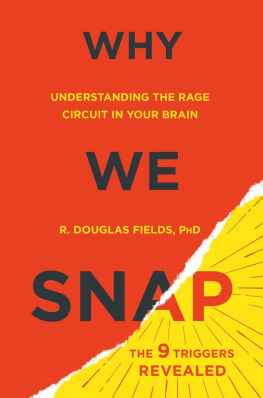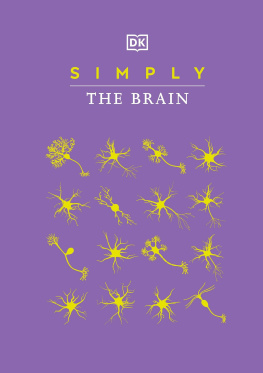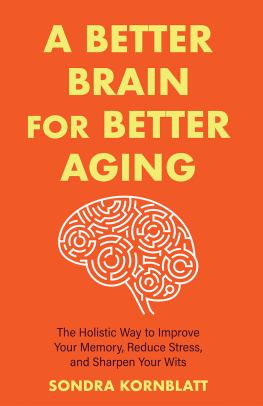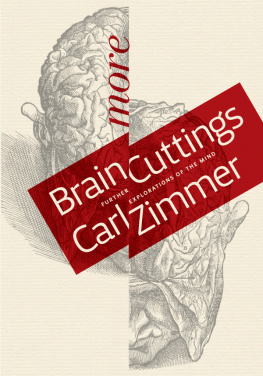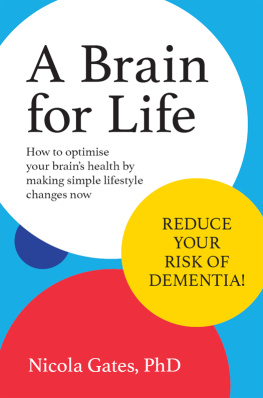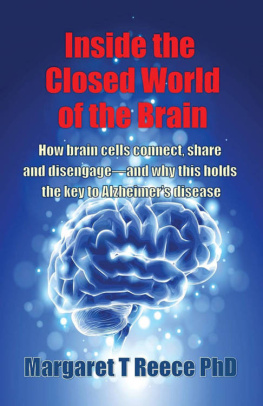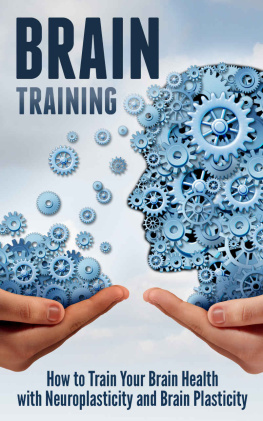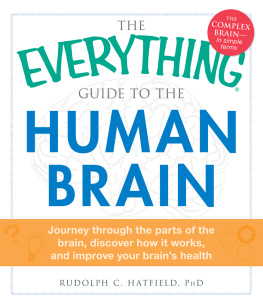The
Other Brain

FROM DEMENTIA TO SCHIZOPHRENIA,
HOW NEW DISCOVERIES ABOUT THE BRAIN ARE
REVOLUTIONIZING MEDICINE AND SCIENCE
R. DOUGLAS FIELDS, PH.D.


Simon & Schuster
1230 Avenue of the Americas
New York, NY 10020
www.SimonandSuster.com
Copyright 2009 by R. Douglas Fields
All rights reserved, including the right to reproduce this book or portions thereof in any form whatsoever. For information address Simon & Schuster Subsidiary Rights Department, 1230 Avenue of the Americas, New York, NY 10020.
First Simon & Schuster hardcover edition January 2010
SIMON & SCHUSTER and colophon are registered trademarks of Simon & Schuster, Inc.
Figure credits are listed after the Index.
For information about special discounts for bulk purchases, please contact Simon & Schuster Special Sales at 1-866-506-1949 or business@simonandschuster.com.
The Simon & Schuster Speakers Bureau can bring authors to your live event. For more information or to book an event contact the Simon & Schuster Speakers Bureau at 1-866-248-3049 or visit our website at www.simonspeakers.com.
DESIGNED BY Kyoko Watanabe
Manufactured in the United States of America
1 3 5 7 9 10 8 6 4 2
Library of Congress Cataloging-in-Publication Data
Fields, R. Douglas.
The other brain : from dementia to schizophrenia, how new discoveries about the brain are revolutionizing medicine and science / R. Douglas Fields.
p. cm.
Includes bibliographical references and index.
1. BrainPhysiology. 2. Brain chemistry. 3. Cognitive neuroscience. I. Title.
QP376.F46 2009
612.8dc22 2009034287
ISBN 978-0-7432-9141-5
ISBN 978-1-4391-6043-5 (ebook)
CONTENTS
PART I
Discovering the Other Brain
PART II
Glia in Health and Disease
PART III
Glia in Thought and Memory
PREFACE
How do the 100 billion neurons in our brain allow us to remember who we are; to learn, think, and dream; to be stirred by passion or rage; to ride a bike or conjure meaning from inked patterns on paper; or to pluck out instantly a mothers voice from the muddle of a noisy crowd? What goes wrong with neural circuits in schizophrenia or depression, or in dreadful diseases like Alzheimers, multiple sclerosis, chronic pain, or paralysis?
We are on the cusp of a new understanding of the brain that transforms a century of conventional thinking about the brain, specifically the role of the brains neurons. Crowding around the computer screen in a darkened room in 1990, scientists watched information passing through peculiar brain cells, bypassing neurons and communicating without using electrical impulses. Until this discovery scientists had presumed that information in the brain flowed only through neurons by using electricity. In fact, a mere 15 percent of the cells in our brain are neurons. The rest of our brain cellscalled gliahave been overlooked as little more than packing material stuffed between the electric neurons. Housekeeping cells they were called. Dismissed as cellular domestic servants, glia were neglected for more than a century after they were discovered.
Now scientists are shocked to learn that these odd brain cells communicate among themselves. Scientists understanding of the brain has been shaken to its foundation by the discovery that these cells not only sense electrical activity flowing through neural circuitsthey can control it.
How did scientists miss half the brain until now? Glia do not fire electrical impulses, and so the probing electrodes neuroscientists use to monitor neurons were deaf to glial transmissions. Glia are not connected through synapses into circuits the way neurons are. Rather than passing messages sequentially like a falling line of dominos, glia broadcast their messages broadly throughout the brain.
How will this new discovery change our understanding of the mind? Will the mysteries of how the mind fails in mental illness or disease be solved as we explore this new dimension of the brain? Will the search uncover answers to how the brain can be repaired after disease or injury?
The discovery of gliathe other brainis a dawning that illuminates every aspect of brain science, touching simultaneously all researchers working on the brain. This is a story of science in action, with twists and turns, insight and confusion, controversy and consensus. Along the way you will meet some fascinating scientists who are real people, each one different and sometimes peculiar, but each engaged in the most collaborative of all human activitiesscience.
The information here is so new it has not yet found its way into textbooks. This information will change your understanding of the brain. It will also provide you essential knowledge that will benefit you or your loved ones in your own health. The book is packed with the latest information on neuroscience and medicine, and it brings you inside for an eyewitness view through the eyes of one of the researchers involved.
ACKNOWLEDGMENTS
Although I had written many academic articles on this subject, this book originated when the editors at Scientific American, Ricki Rusting and John Rennie, were intrigued enough to publish an article submitted by an unknown author. At a time when the information was new and strange, and still discounted by many, they appreciated the importance of this breakthrough and published the first article on glia for a popular audience as the cover story of the April 2004 issue, The Other Half of the Brain. I owe much of the success of that article to the editor who worked with me on it, Mark Fischetti.
It might have ended there had not Jeff Kellogg, a literary agent who read the Scientific American article, contacted me with the suggestion that I write a book on the subject. Knowing nothing of literary agents or book writing for the popular market, I promptly deleted his e-mailand his next one as well. Fortunately he persisted, and soon I learned from Jeff how to write a book proposal. I could not have had a better person helping me and working as my agent. When Simon & Schuster agreed to publish the book, the difficult task of guiding a research scientist through the complex process of writing a book that the public might want to read fell to Senior Editor Bob Bender. Bobs expert guidance has been crucial in bringing this book to completion, and I am grateful for his help and commitment to the project. I am indebted to Loretta Denner, to Amy Ryan for her discerning copyediting, to Morgan Ryan for careful fact-checking, and to Johanna Li.
To all my scientific colleagues and coworkers who permitted me to share their stories and comments, I offer my sincere thanks. I hope that the reading will provide for them, as the writing did for me, a renewed appreciation of the joy and privilege of what we do as scientists. I owe a special thanks to Dr. Susanne Zimmermann and Prof. Christoph Redies of the University of Jena for their help in researching Hans Berger, and to Lydia Kibiuk, Alan Hoofring, and Jen Christiansen for their outstanding illustrations.
One of the delights of this project has been working with and learning from some of the top editors and authors bringing science to the public. In particular I acknowledge Mariette DiChristina, Christine Soares, and David Dobbs at


